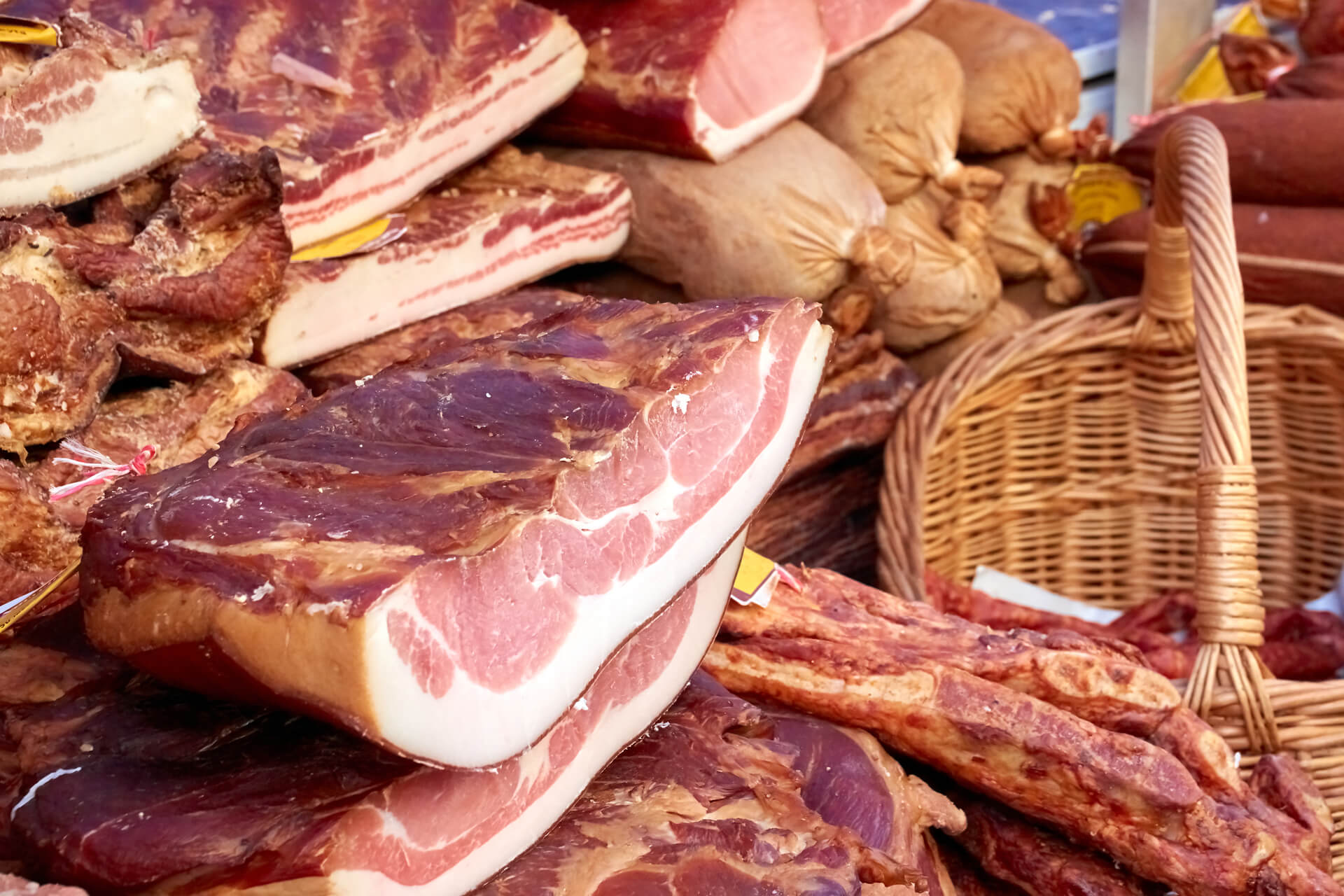Discover Fresh Cuts at Bagley Farms Meat Market Edwardsville IL for Your Following barbeque
Discover Fresh Cuts at Bagley Farms Meat Market Edwardsville IL for Your Following barbeque
Blog Article
Uncover the Art of the Butcher's Cut in a Modern Meat Market
In the ever-evolving landscape of modern-day meat markets, the butcher's cut has actually transcended its traditional roots, combining age-old craftsmanship with contemporary techniques. Today's butchers are not simply cpus of meat; they are experienced artisans that stress sustainability and ethical sourcing. Their proficiency in choose and preparing cuts tailored to certain culinary needs uses an unparalleled dining experience. What absolutely establishes the contemporary butcher apart is their capability to build a much deeper link between customers and the beginnings of their meat. Exactly how do these masters equilibrium practice with technology, and what ramifications does this have for the future of meat consumption?
Evolution of Butchery Methods
The development of butchery methods shows a rich tapestry of innovation and adjustment driven by improvements in technology, modifications in consumer need, and a much deeper understanding of meat scientific research. Historically, butchery was a craft passed down via generations, with methods refined over centuries to make best use of return and taste. Nevertheless, the commercial change ushered in mechanization, changing traditional practices and enabling large-scale processing.
The mid-20th century saw butchery methods additionally fine-tuned by clinical understandings right into muscle biology and meat aging, boosting both tenderness and taste. Innovations like vacuum product packaging and refrigeration expanded item shelf-life, permitting butchers to expand offerings and enhance quality assurance. This period additionally noted the surge of specific devices, such as band saws and meat slicers, which boosted precision and effectiveness in meat handling.

Electronic systems currently help in tracking animal provenance and optimizing cuts to fulfill specific customer choices. Additionally, a renewal in artisanal butchery has actually emerged, mixing typical abilities with modern-day knowledge to provide to consumers looking for moral and sustainable meat choices.
Understanding Meat Cuts
Recognizing the details of meat cuts is necessary for both butchers and customers looking for top quality and worth. For butchers, specific cuts mirror skill and regard for the craft, ensuring very little waste and optimum return.

Recognizing muscular tissue structure is crucial; muscular tissues made use of extra often by the animal tend to be harder and are best fit for sluggish food preparation methods, while less-used muscles, like those located in the loin, are more tender and perfect for barbecuing or roasting. Experience with these differences empowers customers to make educated options, boosting their culinary ventures.
Choosing Top Quality Meat
Picking the appropriate meat entails more than simply choosing an aesthetically enticing item from the display screen. bagley farms meat market edwardsville il. The art of selecting top quality meat calls for a discerning eye and expertise of particular characteristics that indicate freshness and excellence. Firstly, focus on the shade; beef ought to have a bright, cherry-red shade, while lamb should display a soft pink tone, and pork a pale pink. This shows the meat is fresh and hasn't been exposed to oxygen for as well long.
Second of all, think about the marbling, which describes the white streaks of fat within the muscle mass. Correct marbling is a vital indicator of tenderness and flavor, as it melts throughout cooking, enhancing the meat's juiciness. Remember, greater marbling frequently associates with superior top quality cuts, such as USDA Prime.
Appearance is another important factor; blog meat needs to feel firm to the touch, not slimed or overly soft. Additionally, bear in mind the fragrance. Fresh meat must have a clean, neutral smell, devoid of any sour or repulsive odors.
Combining Cuts With Food Preparation Methods

Conversely, tougher cuts like brisket and chuck roast are rich in collagen, which breaks down into gelatin when cooked slowly. These cuts are excellent for braising or slow roasting, enabling the meat to tenderize gradually and create deep, complicated tastes. Similarly, cuts such as short ribs and pork shoulder get on well with slow-cooking approaches, where prolonged cooking times change their robust structures right into delicious dishes.
Lamb shanks and oxtail, which need long term cooking to tenderize, are best prospects for cooking or slow simmering. These methods coax out rich, hearty flavors while keeping dampness. By understanding the one-of-a-kind attributes of each cut, cooks and home chefs alike can elevate their culinary developments, ensuring each dish is both satisfying and memorable.
The Butcher's Role Today
Browsing the advancing landscape of the modern meat market, the butcher's role today expands beyond simple prep work of cuts. Contemporary butchers are cooking craftsmens, instructors, and supporters for sustainable practices.
Along with crafting specific cuts, butchers now involve directly with clients, offering cooking suggestions and tailoring choices to fit specific demands and preferences. Their competence in meat aging, marbling, and taste profiles encourages consumers to make informed choices, improving their cooking experiences. This customized service exhibits the butcher's developing function as a trusted advisor in the kitchen area.
Additionally, butchers are crucial in decreasing waste, using entire pets to create diverse items such as sausages and supplies. This thorough approach not only values the pet but additionally straightens with modern sustainability objectives. By doing this, the contemporary butcher symbolizes both custom i thought about this and innovation, adapting to an ever-changing market while preserving the artistry and integrity of their craft.
Conclusion
Proficiency in comprehending diverse meat cuts and top quality indicators equips butchers to offer educated recommendations, lining up specific cuts with optimum cooking approaches. By honoring historical techniques while accepting modern needs, the butcher's role remains vital in today's advanced meat market.
Report this page